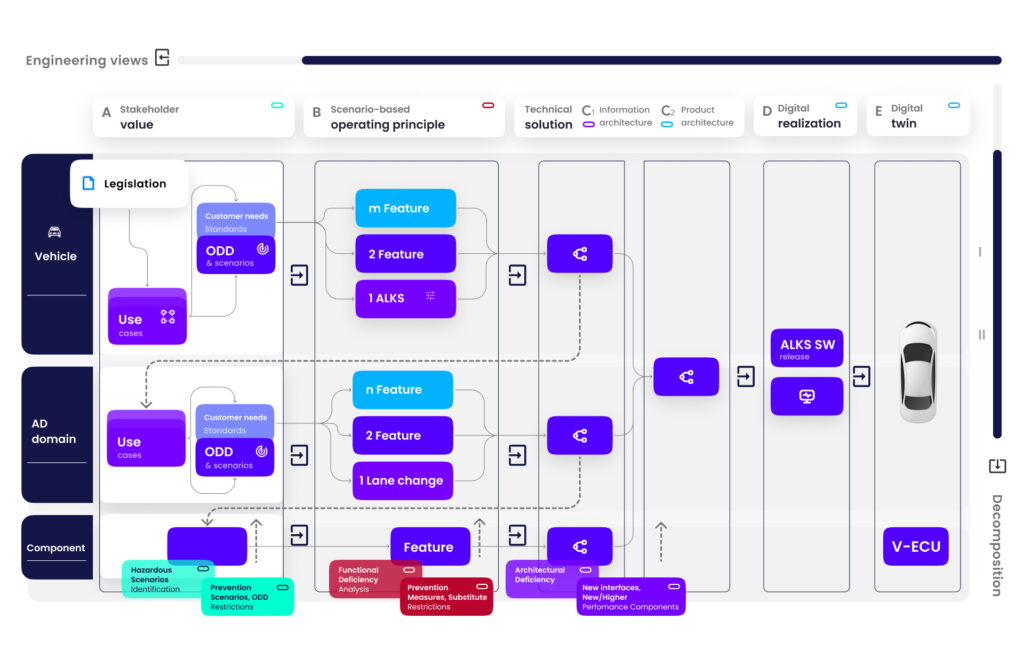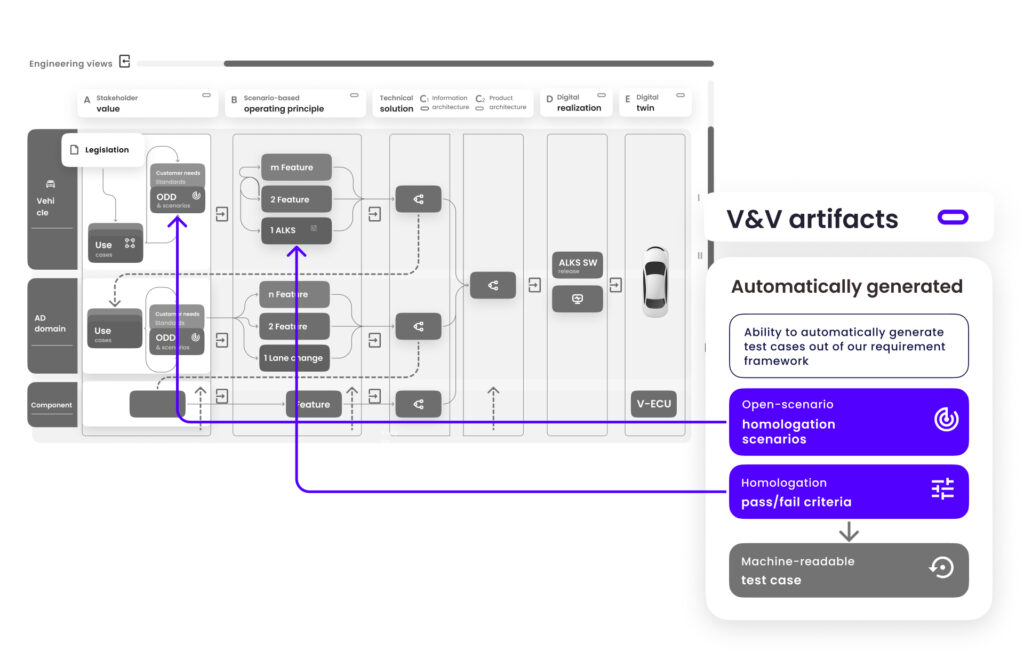A part of FEV Group
Extract Model-Based Systems Engineering Methods and Virtual Testing for Accelerating the Homologation of Software
Author -
FEV.io
Published -
Reading time -
3 mins
A part of FEV Group
Author -
FEV.io
Published -
Reading time -
3 mins

When developing software driven or software intensive systems, the developers must handle holistically the ever-increasing complexity and variability of these systems, while ensuring the highest level of traceability of all applying requirements (legal, performance, comfort, safety, etc.). They must ensure this traceability across all decomposition levels and engineering views of the system as well as all along the development phases and overall lifecycle of their product which might change over time and space.
To address these challenges, FEV.io has developed innovative solutions and methods based on Model-Based Systems Engineering (MBSE) principles. The Compositional Unified System-Based Engineering (CUBE) methodology of FEV.io [1] provides the basic framework for requirement engineering, the product design and all development phases.

The development of advanced driver assistance systems and automated driving systems even request to go beyond the classical requirements-based engineering by adding a scenario-based layer. To enable scenario-based system design using MBSE, a feature’s operational design domain (ODD) and driving scenarios shall be included in the specification model extending the use case definition, which is commonly used in MBSE approaches, see Figure 2.
An extension profile for the applied modeling language, e.g., UML or SysML, with new diagrams and model elements is a suitable approach to model ODDs and scenarios. Modeled scenarios shall represent a machine-readable definition of the time-dependent interaction of the controlled vehicle and its environment. Both logical scenarios describing parameter spaces in the state space and concrete scenarios describing one representative of this state space are to be able to be modelled in this way [2]. The 6-layer model for a structured description of traffic and environment [3] serves as a baseline for developing the modelling extension. The formal representation of use cases, scenarios, expected behavior, architecture, and the traceability among these artifacts in a single model is crucial for scenario-based engineering. Indeed, by linking both the requirements and the scenarios in a unique model, the developers can ensure full traceability of the requirements down to the SW level and at the same time analyze efficiently the impact of a SW update or the introduction of new relevant scenarios on their system.
Having all the relevant requirements and scenarios in a unique model also enables the automatic generation of key verification and validation artefacts such as machine-readable test cases including pass/fail criteria based on the formalized scenario specification and behavioral diagrams inside CUBE, see Figure 3 [4]. This enables high test case quality, traceability to requirements, and simultaneously reduced development workload.

References:
[1] C. Granrath, C. Kugler, S. Silberg, M.-A. Meyer, et al. „Feature-driven systems engineering procedure for standardized product-line development,” Systems Engineering, vol. 24, pp. 456-479, 2021.
[2] M. -A. Meyer et al., “Scenario- and Model-Based Systems Engineering Procedure for the SOTIF-Compliant Design of Automated Driving Functions,” 2022 IEEE Intelligent Vehicles Symposium (IV), Aachen, Germany, 2022, pp. 1599-1604, doi: 10.1109/IV51971.2022.9827151.
[3] M. Scholtes et al., “6-Layer Model for a Structured Description and Categorization of Urban Traffic and Environment,” in IEEE Access, vol. 9, pp. 59131-59147, 2021.
[4] C. Kugler et al., “Ausleitung von Testfällen für automatisierte Fahrfunktionen auf Basis semiformaler Systemspezifikation“ In: Tag des Systems Engineering : Paderborn, 16.-18. November 2022 / Page(s) /Article-Nr.: 65-69